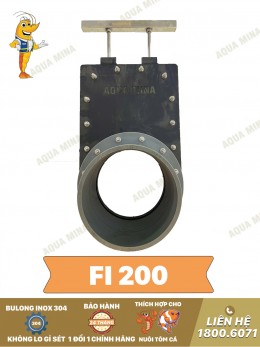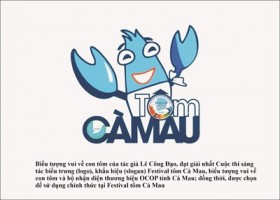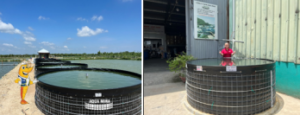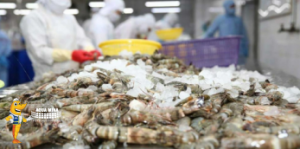How to Acclimate Shrimp Postlarvae in Ponds
Why is it necessary to acclimate shrimp postlarvae?
During the transport of shrimp postlarvae from different regions or environments to the pond, the water parameters can vary. If shrimp are not acclimated, they can experience shock and stress, which can lead to mortality. Therefore, before releasing shrimp into the pond, it is essential to acclimate them.

How to acclimate shrimp postlarvae
First, measure the pH, temperature, and alkalinity in the bag containing the shrimp postlarvae, as well as in the pond where they will be released. If the difference is not too great, acclimation can proceed as usual. If acclimating in a tank, the tank should have a capacity of about 300-500 PL/liter of water.
Ensure that the aeration system is functioning properly, with continuous aeration to supply enough oxygen before releasing the shrimp. Gradually add water from the pond into the acclimation tank to allow the shrimp to slowly adjust and balance the environmental differences.
At the same time, it is recommended to add multivitamins and minerals to help the shrimp cope with stress, adapt quickly, and reduce postlarvae loss.
The duration of acclimation depends largely on the difference in water parameters between the bag and the pond. If the difference is minimal, the acclimation process can take around 30-35 minutes.
During this time, measure the water conditions between the bag and the pond to ensure they are balanced. If the shrimp are swimming actively and healthily, they are ready for release. Any weak shrimp should be separated, and only the healthy postlarvae should be released into the pond.
Note:
Use a clean net to transfer the shrimp from the acclimation tank to the pond to avoid introducing any potential pathogens present in the water from the transport bag.
By following these steps, you now understand why and how to acclimate shrimp postlarvae in ponds. Wishing you success in your shrimp farming endeavors!
Ngày đăng : 17/10/2024
2536 View
Other Articles
Cold stress: Effects on the plasma characteristics of whiteleg shrimp.
A new breakthrough in the prevention of diseases caused by the microsporidian parasite EHP in shrimp farming
Vietnam’s shrimp export outlook in the first quarter of 2026 continues to face heavy pressure from tariffs.
New England’s shrimp fishery to shut down for the long haul after years of decline
Crab exports to the United States account for more than 80%.
Thailand sets a target to increase shrimp production to 400,000 tons by 2026.
CTU-RAS: Recirculating Shrimp Farming for Sustainable Development
Vietnamese aquatic products reach new markets
Global Shrimp Forum: Global shrimp trade is reshaping
China’s Import Value Up 10%, Vietnamese Shrimp Remains Among Leading Suppliers
After the 7.5-magnitude offshore earthquake in Aomori that injured 34 people, Japan has issued a warning about a potential mega-earthquake
India’s shrimp exports accelerate despite the trade war with the United States



















.jpg)